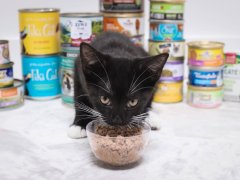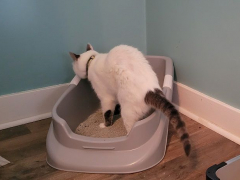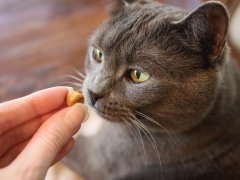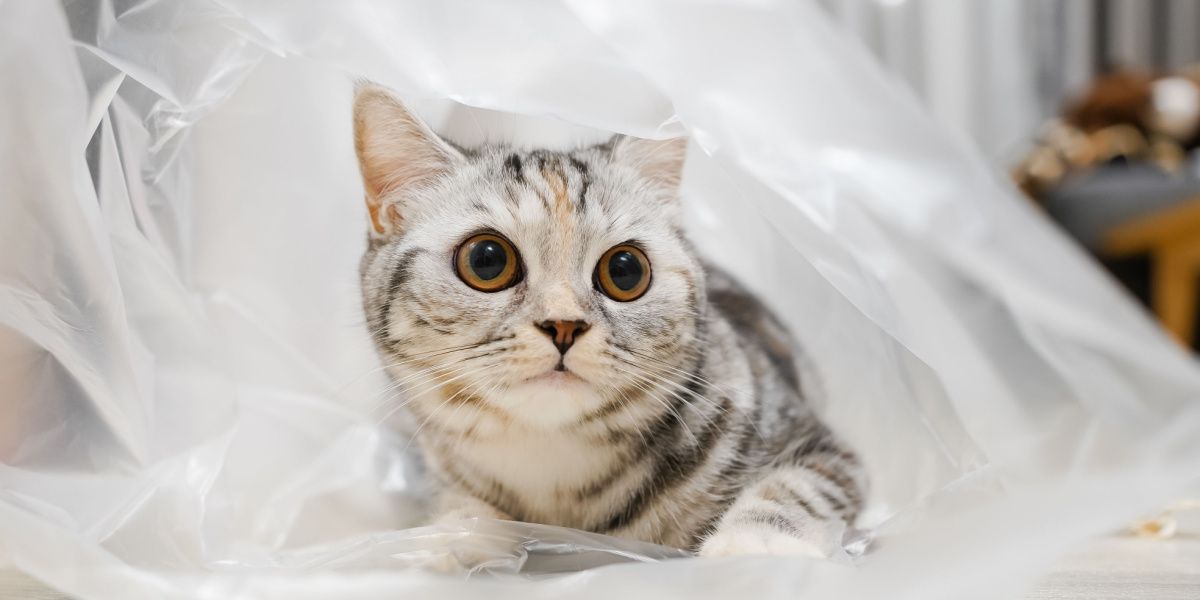
Shutterstock.com
Confession time: I have a cat who loves to play with (and lick!) plastic bags. He’s done it since I first adopted him—and he still comes running if he hears the rustle of a grocery bag.
Key Takeaways
Cats like plastic for many reasons—for playing with, for its taste and texture, or due to a health concern.
Playing with, licking, and eating plastic can all be dangerous for cats.
Limit your cat's risk by reducing access, distracting them, and providing safe alternatives.
Cats are infamous for their quirky habits but licking plastic must be one of the strangest. While cats usually love plastic for its sensory traits, it could also be because they have a medical condition that has altered their appetite.
A cat eating plastic is at risk of intestinal obstruction or even suffocation. So it’s important to get to the bottom of this strange habit and make changes to limit this potentially dangerous hobby. It’s important to keep our cats safe by keeping them away from plastic, and providing other substrates for them to play with and chew, such as toys or cat grass.
5 Reasons Why Cats Like Plastic Bags
There are a few reasons why your cat may be attracted to plastic items. Knowing why they’re chewing, licking, or playing with plastic can help us prevent this behavior and keep them safe. Let’s take a look at those reasons.
1. Sensory Input
Items made of new materials can be very intriguing to our curious cats. Plastic is crinkly, smooth, pliable, and very light. It can be batted around, scrunched up, and investigated by claws, mouth, and nose.
You know cats love to play! Plastic shopping bags, plastic toys, and other items can all be attractive to our mischievous feline pets. If your cat doesn’t have much access to toys or other forms of stimulation, boredom may lead to them playing with non-traditional toys.
2. Taste
When you think of delicious smells and tastes, plastic grocery bags probably don’t spring immediately to mind. However, the smell and taste may be partly what attracts cats to some plastics.
Bags can be made of gelatin (an animal by-product) or coated in cornstarch or stearates. These tastes and textures may not appeal to us, but cats have a superior sense of smell. They may be drawn to the tastes and textures imbued within the plastic.
Shopping bags may be particularly appealing if they have taken on some of the food odors when transporting our groceries—especially meat or fish.
3. Breed
Some cat breeds are more known for eating and licking non-food items than others. Burmese and Siamese cats are particularly renowned for their strange eating habits, which may include some seemingly odd choices such as plastic bags.
4. Anxiety and Obsessive Compulsive Disorder
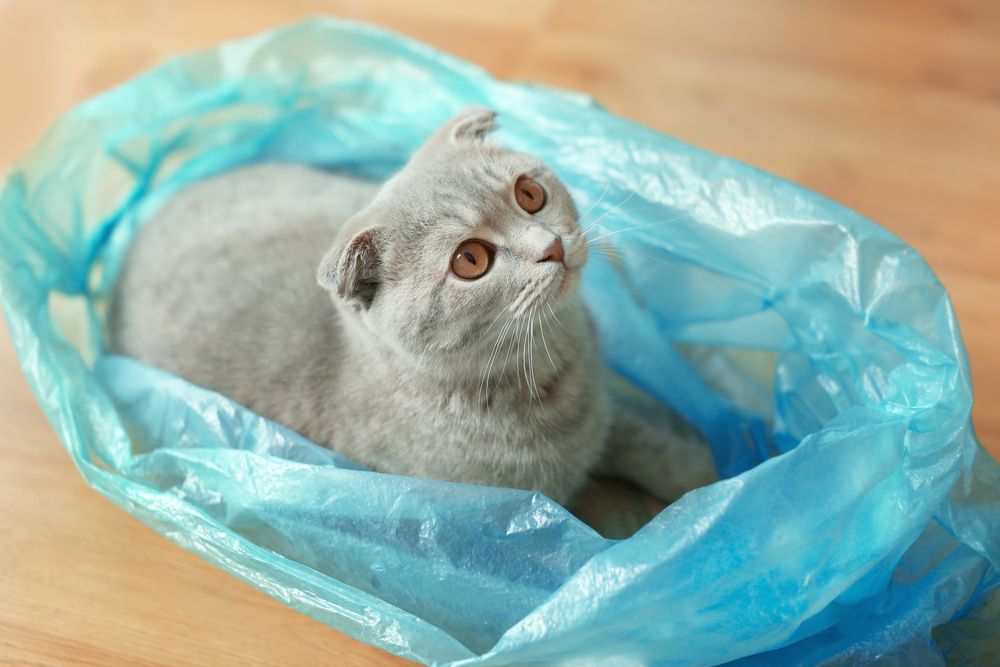
Cats are attracted to the sound, smell, and even taste found in many plastic grocery bags. Shutterstock.com
Stress and anxiety can present in a multitude of ways in cats. These include becoming withdrawn, changes in appetite and toileting habits, aggression, and hiding. But it can also include inappropriate chewing. If your cat suddenly starts chewing on objects such as bags, furniture, or electrical cords, it may be a sign that they’re unhappy about something.
This could be a new cat in the neighborhood, a new baby, construction work, or even loud noises. These new behavior patterns can become repetitive and compulsive—similar to obsessive compulsive disorder (OCD) in people.
5. Medical Problems
The behavioral need to eat non-food items, such as plastic, is known as pica. There are various underlying causes, including nutritional deficiency and some medical conditions.
Some common diseases that can cause pica as a symptom include:
- Diabetes
- Hyperthyroidism
- Anemia
- Infections, such as feline infectious peritonitis (FIP)
- Malnutrition or a deficiency in various vitamins or minerals
- Dental disease
- Parasites
- Gastrointestinal problems, such as chronic diarrhea
- Neurological disease, including brain tumors
Pica can be the sole issue, but many diseases cause additional signs. For example, with dental problems, you may also notice that your cat has more drool, bad breath, or sore gums. If you are concerned that your cat is unwell, always seek advice from a veterinarian.
Is It Bad for Cats to Lick Plastic Bags?
It may seem like a harmless, quirky character trait, but cats who eat or lick at plastic bags and other inedible items can do themselves harm. Plastic can become entangled around the neck and head, leading to strangulation or suffocation. If eaten, plastic can become lodged in the stomach or intestines, leading to internal blockages.
If you have seen your cat licking at or eating something plastic, remove the items immediately. Monitor them closely for signs of poor health, such as vomiting, lethargy, or pawing at the throat. Always take your cat to a vet if you are concerned.
How to Stop My Cat from Licking Plastic Bags?
It can be a worry to have a cat who likes to eat plastic and other inedible items, but there are ways to help.
1. Provide a Healthy Diet
The first thing to check is that your cat is eating a well-balanced diet. Their food should be nutritionally complete for felines and suitable for their age and lifestyle.
2. Restrict Access
If, like me, you know you have a cat who likes to play with (and lick!) plastic, then it’s a sensible habit to keep plastic bags and other items out of reach. Always put away grocery bags, keep electrical cables secure and out of reach, and tidy loose items away.
3. Distraction and Redirection
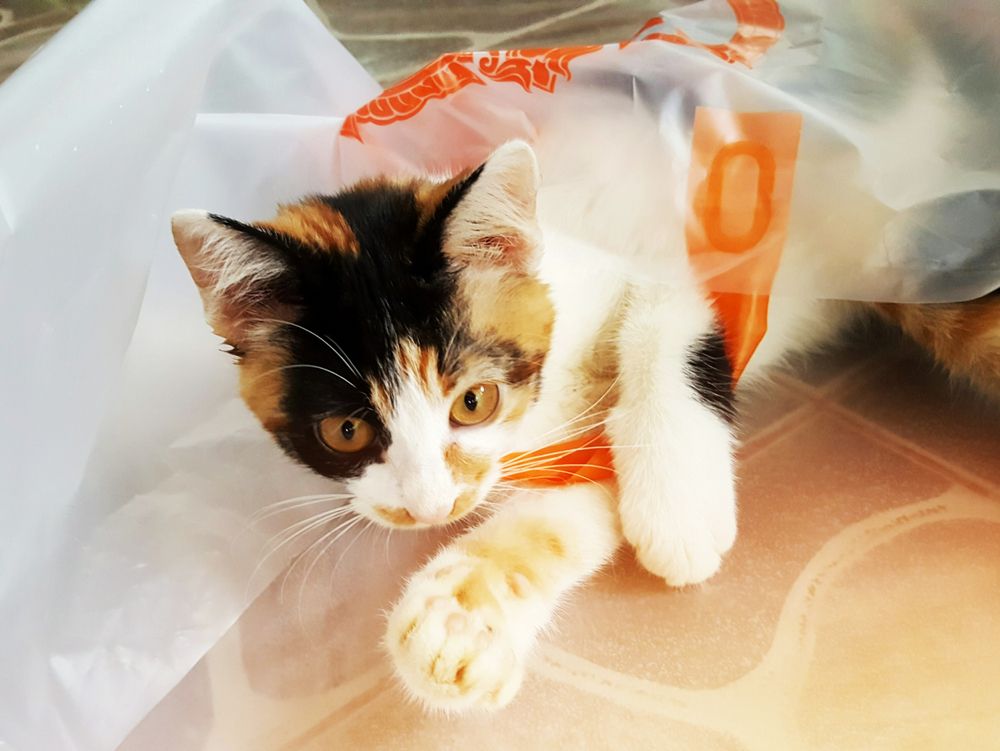
Shutterstock.com
What do you do if you catch your cat in the act? Don’t punish or shout, as this will only scare them and lead to ongoing stress. Instead, calmly distract them from the inappropriate item by using treats or toys, and then remove the plastic from their reach.
4. Safe Alternatives
Some cats are highly motivated to chew and play. Provide an array of safe objects for them to play with, chew on, and generally keep themselves occupied. Try a variety of types and textures and rotate regularly to prevent boredom.
Make sure your cat has access to good scratching posts, high perches, chew toys, food puzzles, and interactive toys to provide both physical and mental stimulation. Set aside regular periods of time to play and interact with your pet. Cat grass can provide excellent safe enrichment for cats who like to chew.
Related Conditions
Frequently Asked Questions
Is it bad for cats to chew on plastic?
Some plastics are safe for cats to chew on but many are not. Some items, such as plastic bags, pose a strangulation and suffocation risk. Many plastics can cause intestinal blockages if eaten. Always provide your pet with cat-safe chews and toys to gnaw on.
Why does my cat play with plastic?
Cats may enjoy plastic for its texture and sensory input—it’s crinkly, light, and fun to play with. Cats often have a high drive to be provided with suitable toys. Some cats also enjoy the taste of plastic bags, which are often coated with gelatin or stearates.
What is pica syndrome in cats?
Pica is an ailment that causes cats to eat non-food items, such as plastic, fabric, paper, or dirt. It can be due to a nutritional deficiency, behavioral problem, or medical condition.




